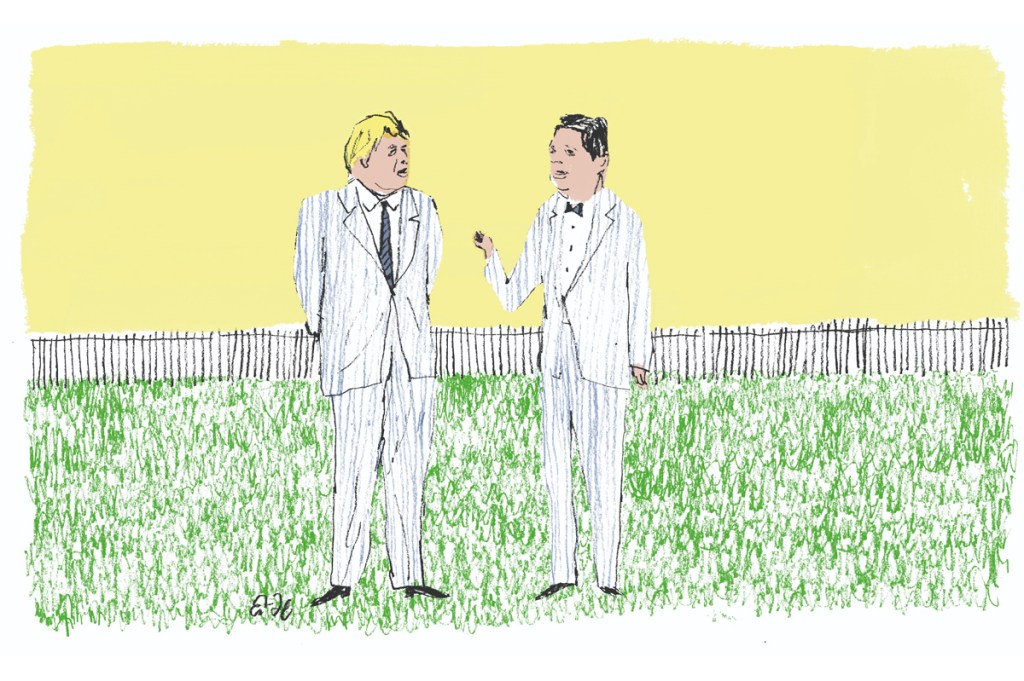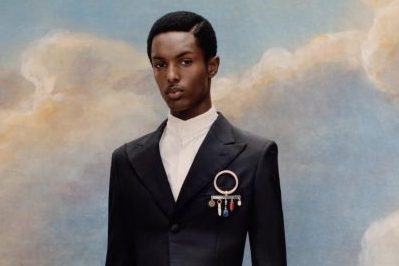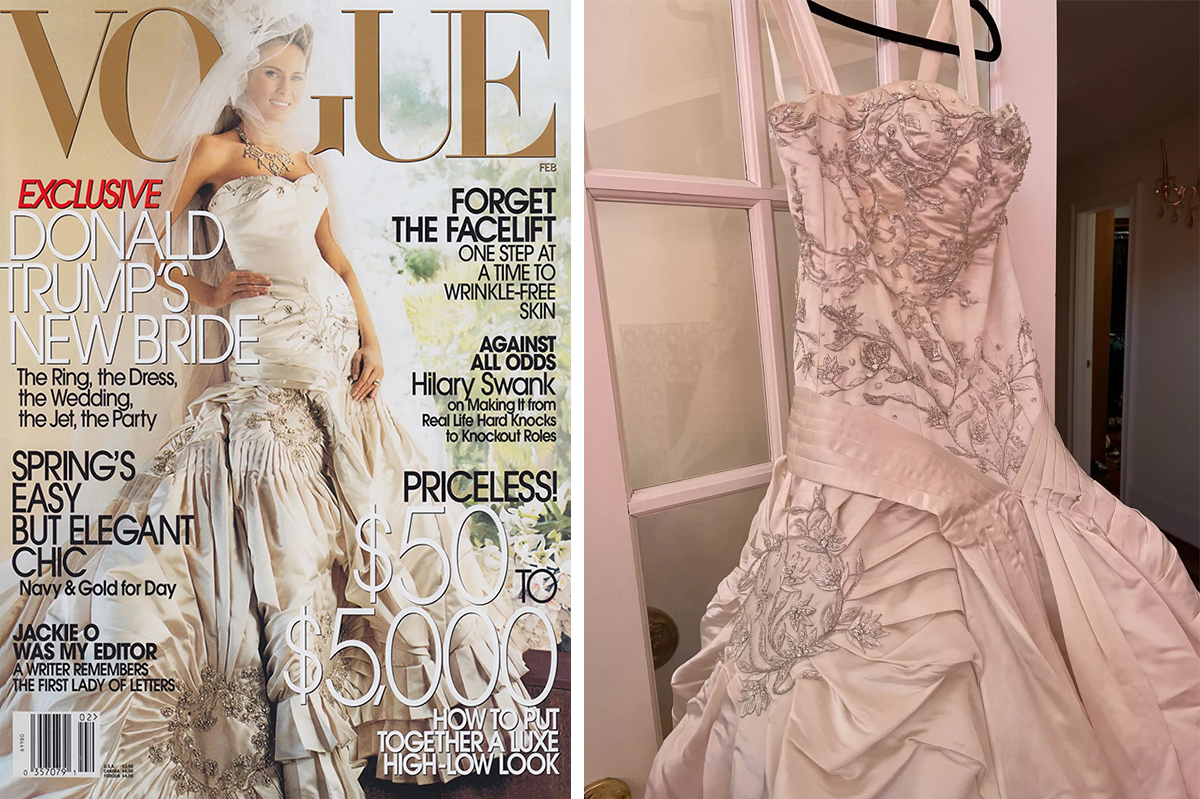‘To every thing there is a season,’ we read in Ecclesiastes, and summer is the season for seersucker. No fabric is better suited for long summer days. Its lightness reflects the sun. Its pucker ventilates the skin. Rather than avoid the heat, seersucker dresses up for the hot occasion. Summers in New York are infernally hot. Seersucker makes it livable, if not always desirable.
Since fashion dictates that seersucker only emerge between Memorial Day and Labor Day — timing that varies as you head south — its absence also makes its return that much more rewarding. As the weather warms, out it comes, radiating the light of summers past. Like those other vestiges of seasonal style — all developed before the advent of air conditioning — through the return of seersucker we celebrate another year around the solar system. The fabric is our salute to the sun. More than ever, the time to wear it is now. We are a social species. Nothing says the return of summer society quite like it.
Seersucker has its privileges. Nearly 20 years ago this magazine ran a ‘Spectators for Africa’ promotion. I started my own ‘Spectators out of Africa’ campaign. I care little for ‘Do-They-Know-It’s-Christmas’ saviorism. I also believe in keeping Rod Liddle out of the sub-Sahara. So when then-editor Boris Johnson made a ‘humble appeal to our readers’ that invoked the ‘spirit of Sir Bob Geldof’ and asked them to ‘think of Africa this Christmas’, I let my doubts be known. In Brideshead Revisited, after all, we read of Cordelia Flyte’s easy comforts in all the ‘black Cordelias’ that would be born in Africa due to her facile munificence. We similarly did not need more African Borises.
That same summer, the Republican National Convention came to New York. I ran into Boris at a Midtown party. He was sporting a strikingly wide-gauge seersucker stripe.
‘So, it was you!’ he exclaimed, jamming his finger in my ribs. What could have been a tense standoff soon dissipated. We were both wearing seersucker suits. In no time flat we were exchanging sartorial notes. ‘Sīr-o-šakar,’ said the future prime minister, flashing his hem. ‘From the Persian for “milk and sugar.”’
Boris was right about seersucker’s etymology. In the 19th century, the mad-dogs-and-Englishmen fabric, at one time made of silk, emigrated from Persia through the Indian subcontinent by way of colonial rule to relieve America’s noonday sun. It ended up as overalls and railroad caps and bed ticking as an inexpensive cooling weave. In the early 20th century, the fabric went high fashion as it became incorporated into summer suits and dresses, starting in the South and making its way into Ivy style through Princeton, the most southern of the League’s schools.
The New Orleans clothier Joseph Haspel Sr gets the credit for making seersucker fashionable through his brand, around 1909. At an industry convention in Boca Raton in 1946, he even walked into the Atlantic Ocean wearing one of his suits and then returned for the banquet dinner after it air dried, no pressing required. The long-term effects of salt water may require further testing, but the genius of the fabric comes from what’s known as its slack-tension weave. By varying the tension at small intervals during manufacturing, the cotton thread piles up just so, producing a puffy white line between tied-down stripes, now offered in a range of colors.
Unlike dry cleaning, wash and wear should enhance this pucker, giving the fabric more breathable lift. Which is why it is wrong that some manufacturers started making seersucker ‘dry clean only’. Most likely this has to do with the introduction of elastic synthetic fabrics. Save that for the sweatpants. A true cotton seersucker should be washable and keep costs at a fraction of similar apparel in wool. Seersucker should not be expensive. It only looks like a million bucks.
Now back in family hands, Haspel continues to be my go-to seersucker brand, though I avoid its ‘stretch’ line. Joseph Haspel Jr, outfitted Gregory Peck himself for the 1963 film To Kill a Mockingbird. Jr’s granddaughter now manufactures the company’s clothing again in the United States. You can also do fine at Brooks Brothers and other traditional clothiers. For our island summer wedding some 15 years ago, I went with a golden seersucker from Paul Stuart — a suit that, my wife agrees, still wears smartly today.
Contemporary trendsetters will tell you not to wear seersucker as a full suit but to mix and match with jeans or some other item of fast fashion. I go the other way, assembling the full Monty. That means a seersucker suit with bow tie and white bucks and, at times, a Ponte Rialto boater. Keep it loose, but just be mindful of avoiding the overly boxy cut, or risk looking like Sen. Trent Lott’s seersucker caucus of the 1990s. Brooks again is where you may still find a pair of classic suede bucks, although the shoe unfortunately seems to be going the way of spats and the dodo. In my office, I keep a bag of chalk as well as a special eraser for the bucks. The shoes get easily scuffed, especially as I now avoid the subway and instead ride an electric scooter five miles down the Hudson River Greenway to work.
COVID of course has only hastened our crisis of fashion. Just as England expects every man will do his duty, so every gentleman or lady now has a duty to restore decorum after a highly indecorous year. If you are anything like me, you spent much of this pandemic adding to your more formal wardrobe, keeping some grateful haberdashers afloat. It was the least we could do.
Seersucker always enlightens the streetscape. From Sen. Daniel Patrick Moynihan to William F. Buckley Jr, our favorite people across the political spectrum once wore it. Here is a fashion that can go straight from summer Fridays to summer Saturdays, from office to rooftop cocktail to garden party to weekend wedding. With little fear of wrinkling, it travels lightly and looks just as crisp on women as men, on old as young.
Now just consider the pride you should feel in being a frontline worker in the cause of seasonal normalcy. Your neighbors will thank you, as mine often thank me, for keeping up appearances at a time when many others have let us down. The seersucker reaction is a sensitive barometer of conviviality. You welcome where it is welcomed and avoid where it is not. Fortunately, from the Bronx to Bushwick, just about all of New York likes a crisp one, as I have found from the compliments that follow suit. The same goes for the Veneto, where seersucker offers just the right protection from wind and sun on that motoscafo from Dorsoduro to Burano.
In the darkened streets of Spain, however, where fashions range from pitch- to vantablack, the reaction seemed more subdued. The same goes for the open-plan vistas of the American tech sector. I have yet to see a seersucker hoodie, and I hope I never do. Aggressive cuts and stretchy blends are an affront to the cool construction of a seersucker suit’s classic cut. There is no need to ironize one of the last holdouts of unironic fashion. As the milk and sugar of summer, seersucker is best enjoyed full gulp.
This article was originally published in The Spectator’s July 2021 World edition.

























